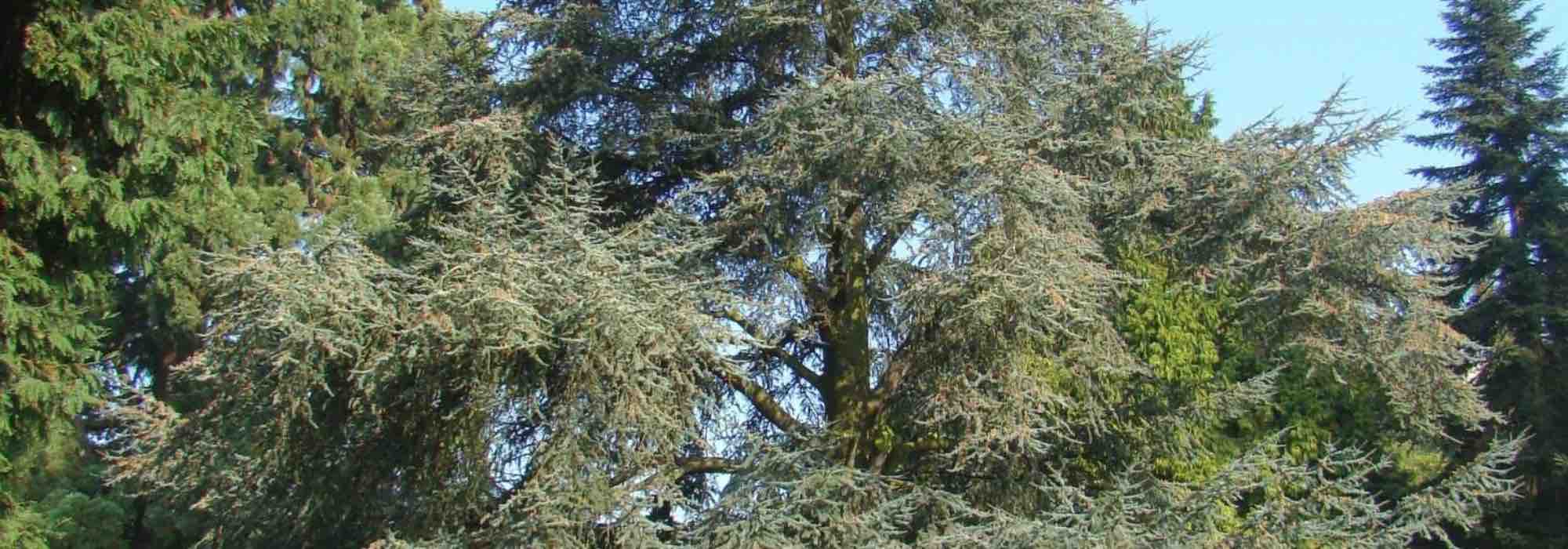
How to choose a cedar well?
Buying guide and criteria to find the perfect variety
Contents
The cedars (Cedrus) are these majestic and imposing conifers that are often found in parks or large gardens. They are recognised by their often pyramidal or tabular silhouette, forming nival zones. These are trees valued for their longevity and their resistance to both pollution and parasitic threats, as well as to certain challenging growing conditions.
There are different varieties of cedars, some of which can be grown in smaller spaces. Depending on their foliage, size, and use, discover our buying guide to find the ideal cedar for your garden.
In addition, to learn everything about growing cedars, check out our complete guide: Cedar: planting, pruning and maintaining.
Choosing a cedar based on foliage
Cedar trees have evergreen leaves, consisting of rosettes of needles in varying colours.
Green Foliage
These are the most common. The green colour can range from the darkest shade to the lightest shade.
With the iconic Lebanese cedar (Cedrus libani), the foliage displays a very dark green, making it highly visible in the landscape.
For its part, the Atlas cedar (Cedrus libani atlantica ‘Sargentii’) is a variety that bears needles of a fairly light green at the beginning of the season, which will then darken over time.
The same observation applies to the Himalayan cedar (Cedrus deodara), whose foliage is a soft green, almost almond.
The variety ‘Pendula’ produces, on the other hand, fine and flexible needles that are initially light green at bud burst. Then, they will take on darker shades with ripeness.
Blue Foliage
Cedar trees with blue foliage are among the most appreciated. This is the case with the famous blue Atlas cedar, particularly with the ‘Glauca’ variety. The needles display a magnificent bright blue in spring, before taking on silvery-grey hues during summer. A particularly aesthetic conifer!
This is also true for the ‘Horstmanns Silberspitz’ variety. It has the particularity of producing young shoots that are cream-white tinged with silver, which will turn golden yellow in autumn. This creates a beautiful contrast with the blue-green needles when they are mature and older.
Let’s also mention the Himalayan cedar ‘Feeling Blue’, with its beautiful bluish-green foliage. For its part, ‘Karl Fuchs’ produces rather needles with a grey-blue hue.
Golden Foliage
Golden foliage is the brightest of all, capable of bringing a lot of light to the garden. It can be found particularly in the Cedrus deodara ‘Aurea’ or golden Himalayan cedar. The young shoots of its spring foliage display lovely golden reflections, before turning soft green over time.
The same observation applies to the Cedrus deodara ‘Golden Horizon’ or dwarf Himalayan cedar, which features foliage that combines green and golden yellow, very bright.
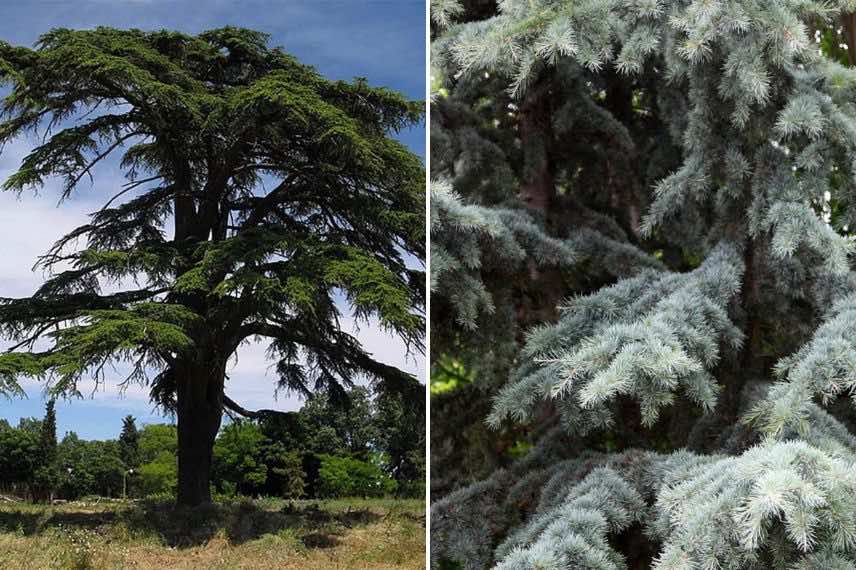
Lebanese cedar and Himalayan cedar ‘Karl Fuchs’
Choose a cedar according to its habit.
Some cedars have a tabular silhouette, with branches that are almost horizontal. They form like nival zones. This is the case with the Lebanon cedar.
With the Atlas cedar, the silhouette is more pyramidal, but it will also become tabular over the years. The same observation applies to the Himalayan cedars. The variety ‘Karl Fuchs’ nevertheless has graceful branches, with slightly weeping tips.
Very different, the silhouette of the cultivar ‘Sargentii’ is all about width, with a low and spreading habit that will form a vegetative cushion.
Let’s also mention the weeping Atlas cedar which, as its name suggests, has a silhouette that makes it resemble a true vegetative waterfall. These trailing branches are indeed almost vertical. Over the years, it will become almost as tall as it is wide.
Choosing a cedar based on its size and use
Cedar trees are impressive conifers: some can indeed exceed 50 metres in height! However, there are also smaller species that can find their place in less spacious gardens.
The small varieties
With a rather slow growth, they will reach about 5 metres in height over time. Among these varieties is the Atlas cedar ‘Pendula’, valued for its magnificent weeping habit. After several years, it will modestly reach 4 metres in height and 6 metres in spread.
For its part, the Himalayan cedar ‘Feeling Blue’ is considered a dwarf variety, as it will not exceed 1 metre in height and 3 metres in spread. With its spreading silhouette, this cedar will make a perfect ground cover in rockeries, to dress a slope or border a terrace.
Equally modest, the Cedrus deodara ‘Golden Horizon’ will brighten medium-sized spaces with its bright golden foliage. It will measure 2 metres in height and 3 metres in spread at ripeness.
Another slow-growing and small-sized cultivar, the Atlas cedar ‘Sargentii’, which spreads to 3 metres in height and 1 metre wide. Perfect for dressing the top of a wall. It can even be grown in a large pot to adorn a sunny terrace or balcony.
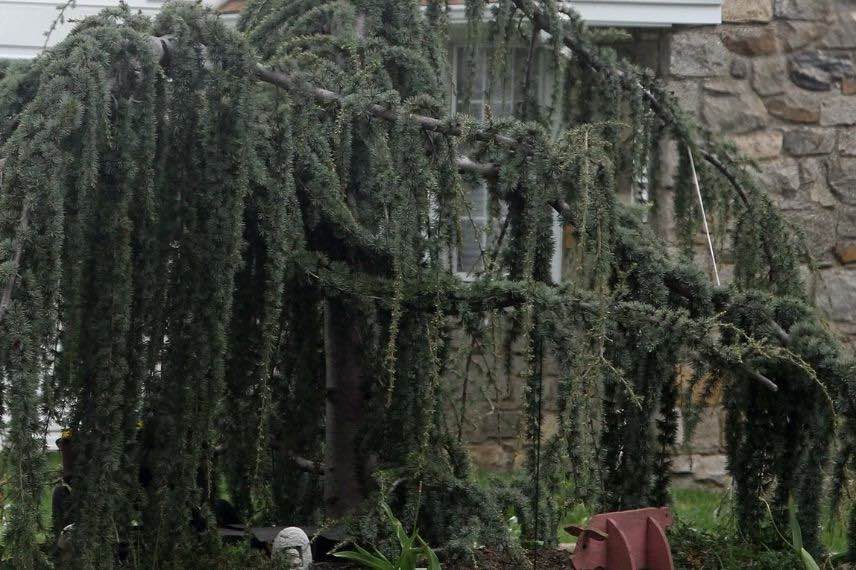
Weeping Atlas cedar
The largest varieties
If you are looking for a centrepiece, a cedar to grow in isolation that will attract attention, choose the largest varieties.
For example, the Himalayan cedar is a true giant, which will measure 20 metres in height at maturity for 8 metres in spread. In the wild, it can even exceed 70 metres in height. Unlike most conifers, it has the advantage of having a rather rapid growth, provided the soil is deep and remains cool (never completely drying out). A bit more modest, the ‘Karl Fuchs’ variety will settle for 10 metres in height and 5 metres in spread.
Let’s also mention the measurements of the Atlas cedar, which reach 20 metres high and 10 metres wide.
Even more impressive, the Lebanon cedar can reach 50 metres in height and 20 metres in spread. It is obviously reserved for the largest parks and gardens.
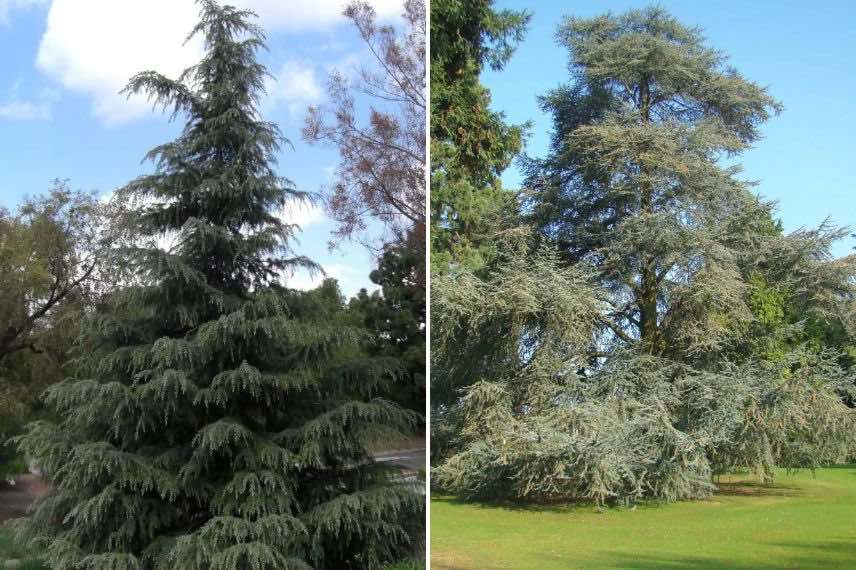
Himalayan Cedar and Blue Atlas Cedar
Choosing a cedar according to growing conditions
Most cedars prefer to grow in sunny, open conditions. However, some can tolerate slightly less bright conditions, in partial shade. This is particularly true for the dwarf Himalayan cedar ‘Golden Horizon’. Its foliage will simply have darker hues than if planted in full sun. ‘Aurea’ can also tolerate light shade.
- Subscribe!
- Contents
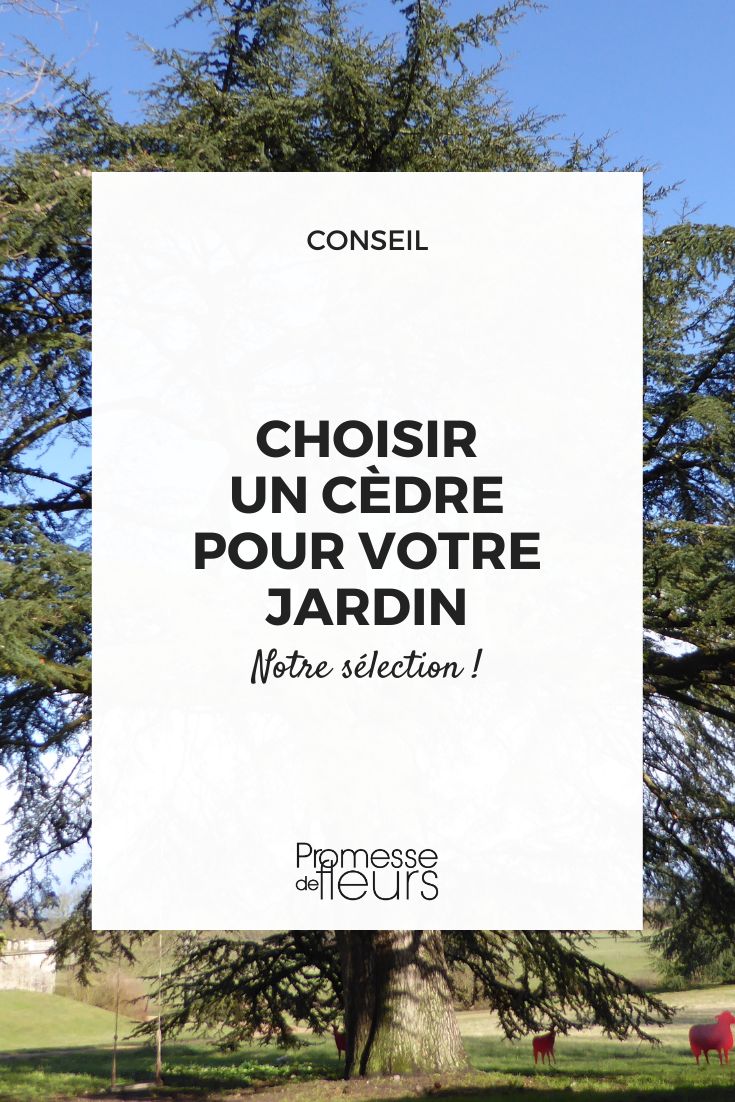































Comments